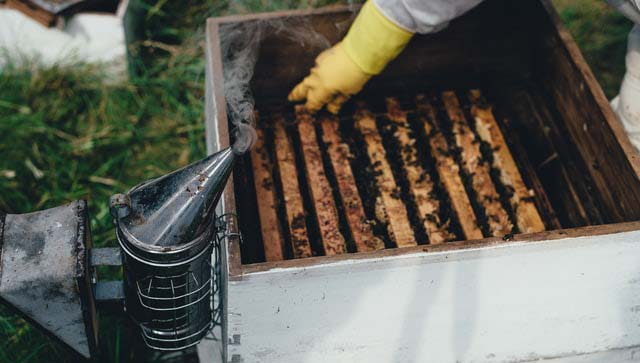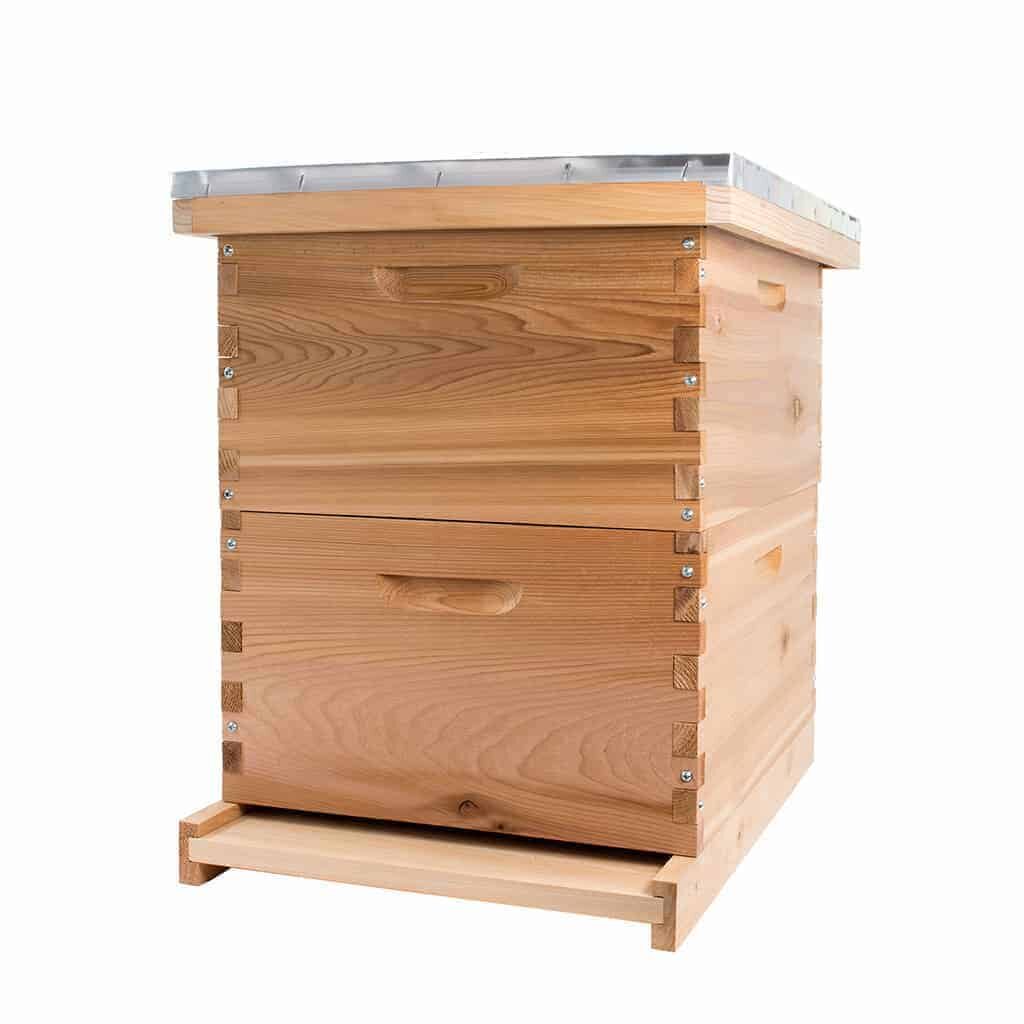How to start a beekeeping business in Uganda. (2022)
Have you ever considered starting your own beekeeping business? If you are looking for a way to make some extra money on the side, this is one way to do it. To set up an apiary, several things need to be considered. This article will outline the steps needed for someone interested in starting their apiary. You will need to consider whether you want to be a hobbyist or professional apiarist, as this decision will affect your experience level and what type of outfit you can invest in. For this article, we shall lean a lot on starting beekeeping as a business. If you want to do it for fun, you can also be with us.
Why should you start a beekeeping business?
There are many reasons why you should start beekeeping as a side hustle. Some are common to all side hustles such as for additional income. For that reason, I’ll try to hint and bring out a few that are exceptional to beekeeping.
- It requires very little of your time.
- At times, side hustles can get all that time consuming but this is exceptional. I sometimes call it a passive business. All you do is set up the hives, do some inspection and let the bees do the magic.
- Its success is not so much dependent on the owner.
- Most businesses, their success heavily relies on you. But for this case, there is another person that comes into play. The bees. You are assured that given the right conditions; they won’t let you down. The bee is always busy working.
- Not forgetting, bee keeping is one of the environmentally friendly side hustles. It’s not all about you, but the environment also. Bees pollinate the different flowering plants such as trees, crops and more.
- You don’t need much room, and the equipment is basic. You can make money. If you need another good reason, here it is: beekeeping is an awesome shared educational experience for families.
Read also: Why you should consider agribusiness for business.
How Profitable is Beekeeping?
As I earlier stated that this is a passive business as it requires very little of your time. This makes it so profitable as it takes less of your time and resources. The main requirement for bee keeping is the shelter or hive for the bees and some feeding in the dry season though this isn’t common in Uganda. Mostly, bees utilize natural resources to give gold to the bee keeper.
In Uganda, a kilogram of unprocessed honey can fetch up to 20000 depending on the location you sell your honey. Each (Ktb) hive that are commonly used in Uganda can fetch up to 15 kg of honey. And 20 kg for the Langstroth hives. You can do the math.
Ways to make more money doing beekeeping business.
It’s absurd that most bee keepers especially I Uganda only harvest honey and bees wax as the main bee products. Bees have many more ways in which beekeepers can get more money. Some are discussed below.
Selling bees and starter kits to newbies.
Just like you may be a newbie and there those experienced beekeepers that shall sell you bees and hives, you too can do this to those that shall come.
Pollination services.
This is just gaining momentum in Uganda. It involves Transporting your beehives to an orchard, nursery, or any agricultural area to help with pollination. You later benefit twice. your bees make more honey and you are also paid for the service.
Bee pollen
bees pollen contains proteins and amino acids. It’s is dried and sold off for cash. It can be collected using special traps placed at hive entrances.
Propolis
This is natural glue bees make to seal cracks inside the hive. Propolis is used in treating various diseases due to its antiseptic, anti-inflammatory, and more properties.
Beeswax.
This is extracted with honey. It is used to make candles, jelly and more products.
Bee venom
This is the liquid bees inject when they sting. It is collected using equipment that you place at hive entrances. Bee venom has powerful anti-inflammatory properties and is used in areas in relation to that.
How to create a profitable beekeeping business plan.
As the saying goes,
Not planning is planning to fail.
Benjamin Franklin
It’s important to make a clear business plan for your apiculture business so that you can progress smoothly through your side hustle. For more information on how to create a profitable business plan for your business, you can read our full blog post about how to write a business plan.
How to start with bees.
Land requirement.
If you are not so careful with who you get advice from as far as land requirement is concerned, you’ll get it all wrong. Bees don’t require all that much space as you might think. Space where the hive can sit with a conducive surrounding is sufficient for bees.
You don’t need acres to do bee keeping. Try placing hives in a quiet place that you dont visit frequently. All that you require is the space for the bee hive to sit. It can be on the roof top, in your back yard and any safe place.
When to start?
For the case of Uganda, we have a lot of wild bees that keep swarming. So, any time you feel like you are ready, you can start. Though the best time is the dry season. This is because wildfires disturb most wild colonies and the look for new homes. Your new hive can be an appropriate home.
How much it will cost you to start and the equpment required.

Bee hives.
There are many types of bee hives on the market today and you can choose to start your beekeeping business with any based on what favours you.
Common hives on the ugandan market.
Langstroth hives.

This is the best modern type of hive. They constitute Boxes in 3 depths i.e. deep, medium, and shallow, with 2 widths i.e. 10 frames or 8 frames. You can make these for yourself if you have some carpentry skills or contact a capentercarpenter to make them for you.
Advantages of langstroth hives.
- They produce more honey as compared to the other types.
- They are more flexible as they can easily be expanded by just adding a box.
Nevertheless, there are shortcomings too,
langstroth hives are expensive as compared to other hive types.
The biggest challenge is that Africanized bees build their combs diagonally across the frames and this calls for constant checkups and forcing the bees to build the right way by destroying the diagonal combs.
Kenyan top bar hive (KTB)
This originated in Kenya hence its name. A good place for beginners is with top bar hives which require minimal equipment and have less expensive start-up costs. To start, you can purchase two or three hives from your nearest store and start off.
Advantages of KTB hives
- They are relatively cheap as compared to langstroth hives. On average, a top bar hive can go for 100000 in Uganda from your nearest store. You can get these hives at a cheaper price if you make the hives yourself.
If you have good carpentry skills, you can download the plan for these hives and make them yourself. This is the cheaper alternative but only for skilled personnel. You cab follow the link for construction guidance of KTB hives.
- Bees easily adopt to these hives in Uganda.
Local hives.
These are made from locally available materials such as pots, logs, and more of the sort. I don’t recommend these as there is no specific method of harvesting honey and they produce very little. It’s not worth it when using these. I’ll not discuss a lot about them because I don’t recommend using them in a beekeeping business.
Additional equipment.
You’ll need additional equipment like the hive tool, bees’ safety gear, smoker, knife, and buckets. These are the main requirements for the start. The others you’ll buy them along. If you are a carpenter or are creative, you can make the hives yourself. You can download the beehive plans and details online.
Read also: How to raise money for your side business
Conditions for a good apiary.
A good apiary should be.
- Away from people or not in a frequently visited place. It’s should not be along a road or in a noisy place.
- It should be near a water source as bees need water
- It should be in the agricultural area as bees get nectar from flowering plants to make honey.
Placing the hives.
There isn’t a lot of work placing the hives. what is important is raising the hives above groung level and setting up the entrance in the right direction.
Raising hives protects them from ants. Hanging them on tree branches can also work though raising them is better. While placing the hives, make sure their entrance is in the direction with no direct sun light, wind and has a lot of light.
Bee hives should be placed at the waist level for easy havesting and check ups. placing hives above the head level makes it hard to che up bees and harvest.
I prefer placing hives on stands 1 meter above the ground level. Hanging hives is on tree branches isn’t that practical as lowering and later raising hives during harvesting and checkups is tiresome.
Introduction of bees
If you are not in Africa, you’ll have to buy starter colonies from other bee keepers to start with in your hive. In Africa, the good news is that we still have a lot of wild colonies that you can trap. Using catcher hives you can transfer bees from the wild to your hive. You can also smear the hive with bees’ wax to attract the swarm. (Trapping) You can do more research about these methods but what is ideal for a starter is trapping bees in the hive in which they’ll live.
Caring for the bees.
As I mentioned earlier, there isn’t much about caring for bees. Below are the ways to care for your bees.
- Feeding bees
Sugar syrup and water is an ideal feed when you have a new colony. Feeding is also necessary in the dry season when all grass and flowering plant are out of flowers.
- Regular checks ups
Regularly checkups are necessary to check on the health of the colony, look out for pests and the state of the queen. As a starter these are complex to do but you’ll get along.
- keeping the apiary tidy with short grass is ideal. do this by regurally slashing the place. this should ne done in cool temperature. or clody weather and with protective gear.
Your main goal as a bee keeper should be:
- Giving bees a condusive home with no leakages, not in direct sun light and more. This is what bees look out for.
- A water source in the neighborhood is ideal. bees make honey using water.
Harvesting honey and Processing honey.
It’s a tough task to harvest honey especially for beginners. I advise you to buy the equipment but for the first time, hire an experienced person to help you with the harvesting. you can try harvesting on yourself when you have the skills and expertise.
Signs of ready honey in the hives;
There are some signs that there is ready honey in the hives. before you choose to havest, look out for these signs .
- Bees become more aggressive when there is honey in the hive. When you try going close to the hives as you used to before the bees are excessively tough.
- There may be a honey flow at the base of the hive and a smell of honey.
- The season of harvesting also speaks tons on the presence of honey in the hive. Though, recently, seasons are changing. it’s better to keep an eye on the hives and do checkups. The harvesting season in Uganda is usually around March and July. this can vary depending on the flowering regimes in your area.
Point to note when harvesting honey and doing checkups.
- You should avoid killing bees by all means during these operations. bees are your livestock.
- All these should be done on a cold day when bees are less active.
- Burning bees or harvesting with fire is a wrong outdated act.
- In case the hives are near homes and animals, consider doing these at night. Bees kill.
- Never try to do checkups or harvest honey without protective gear. I’ve watched some youtube videos with people doing that, others claim that smearing with honey makes you sting safe. Disregard this.
- Do not attempt to do these tasks on your own for the first time. Seek expert help.
- Do not harvest honey with bee larvae or uncapped honey. You should also not harvest all the honey. bees are your livestock that feed on honey. it’s advisable to leave some for them to take them through the nonflowering season.
What are the best ways to promote your new beekeeping business?
- Register your business
- Get a website for your business
- Register with the bee keeper’s association of your country.
- Create social media pages and be active on social media
- Provide bee keeping training services
Read also: The key elements to success for a new business.
How to improve the amount of bee products.
The more the products such as honey, the more money. naturally, it should be every beekeeper’s role to make more honey, wax, and more hence more money.
Here are some tips:
- Avoid killing bees during any checkups or harvesting. also avoid idirect death to bees through the bees stinging any thing be it an animal. bees die after theyve stung. more bees means more workers (foragers) and honey.
- keep your apiary bright with flowers. Bees make honey from nectar. consider planting more flowering plants around our apiary.
- Make sure your apiary is near a water source. Bees usw water to make honey.
- Make standard hives. for the case of langstroth hives, always add suppers for the bees to fill with honey. small hives limit the amount of honey as there is no room for more honey.
- For commercial purposes, consider extracting honey from the combs and later returning them for the bees to refill them. this leaves you with more honey.
Common pests and diseases of bees in Uganda.
Just like any other livestock, bees to fall sick as have pest,, hazards and disease. Ill not discuss all but ill bring out those to watch out for in uganda.
Harzards.
Wildfire.
this is the major cause of the many swarms in Africa, Uganda inclusive. consider keeping the grass in your apiary short to avoid any losses due to wildfires.
Thieves.
This is another great hazard for bees in Uganda. they target apiaries during the time of harvesting. They steal honey and disorganize the hive. most times, they use fire and burn the bees. watch out for these.
Dangerous chemicals.
Though this is not common, it has affected me before. this causes food poisoning and later death. watch out for this and consider seeking assistance from lawmakers and your association.
Pests.
The major pests of concern in Uganda are lizards. A lizard shall not leave an apiary because it’s a source of food for it. When it finds a hive, it usually changes its residence and lives near the hive as it eats bees as food. this greatly reduces the number of bees and remember the more the bees, the more products. lookout for these around your apiary and kill them. other pests are birds though are not a big threat as lizards
Diseases.
These are not so common in Uganda but it’s good to keep an eye on them. I’ve had some of my colonies wiped out by varroa mites and the other disease I’ve not come across in Uganda. consider learning more about these from the books I’ve provided.
Important.
Bees kill and you should never do anything witout protective gear.
In your beekeeping business, watch out for the use of chemicals in your neighboring farms. some chemicals cause bee poisoning. this is against the state laws and consider involving the law in case of such a scenario.
Futher reading and education.
There is a lot to learn about bees and you’ll learn more when dealing with them. Nevertheless, there are some more recommendations I can make for more learning especially about.
Requeening, Swarming and swarm control, Processing honey, Bee pest, and disease control. as these are more complex. for the start, first, get familiar with your bees.
Joining the beekeepers association of your area is important as you’ll learn a lot there.
Some books to do additional reading.
- Natural Beekeeping. Organic Approaches to Modern Apiculture.
- Beginning Beekeeping. Everything You Need to Make Your Hive Thrive.
- The Backyard Beekeeper 4th Edition.
Conclusion
There are many reasons to start a beekeeping business. You can make money from honey production, beeswax products, and the pollination services your hives provide. We’ve provided information on how you can create a profitable enterprise as well as what equipment you require and how you can get them at reasonable prices. Now that we have discussed all of these things let us roll the ball over into your hands. It’s time to give it a try. It’s now or never.
Please subscribe to our newsletter for more such ideas in your inbox.
Sharing is caring !



